A different kind of museum
If we’re in a place long enough, like we have been in Lisbon, we’ll get around to visiting some of the museums, but even then, they’re likely not going to be ones that make the “top 10 places to visit” lists. Our recent experiences haven’t had much to do with art, either. We enjoyed the Maritime Museum and the Coach Museum (that our friend Carol blogged about) – both were less about art and more about big things that move.

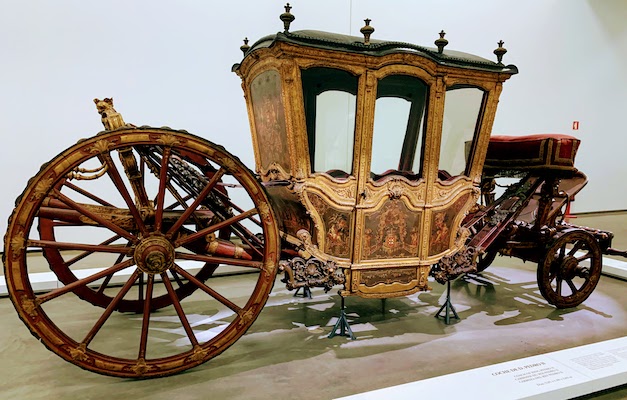
And sometimes we’ll go to an art museum to see specific works, like when we visited the National Museum of Antique Art here to see the St. Vincent Panels. And when we were in Madrid last year, we went to the Reina Sophia museum because Mike wanted to see Picasso’s Guernica.
On the second day of our recent visit to Stockholm, our friend Rosa took us to a museum that was very different from any we’d been to before – the Skansen Open-Air museum, where we got an up-close look at some Swedish history.
But first, some fungi
On Monday morning we got out early. On our way to catch a bus, we passed an open air market with the biggest displays of mushrooms we’d ever seen. If we’d had any kind of kitchen to work in, we might have scuttled the day’s plans and just cooked mushrooms. (That’s if we could have afforded them. We read later that the golden chanterelles sell for as much $224 per pound!)
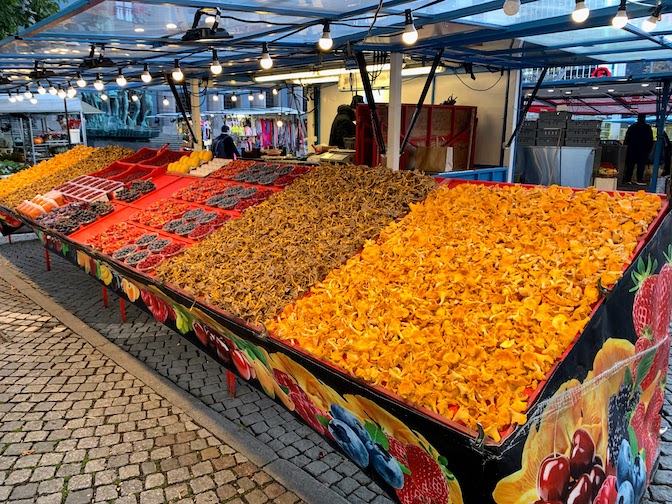
We took a short bus ride to the Royal Djurgården, an island in central Stockholm. In the 16th century it was the royal hunting ground, where King John III kept deer, reindeer, and elk. Today it is one of the most popular recreation areas in Sweden, with museums, concert venues, public gardens and green spaces, walking paths, and even an amusement park.
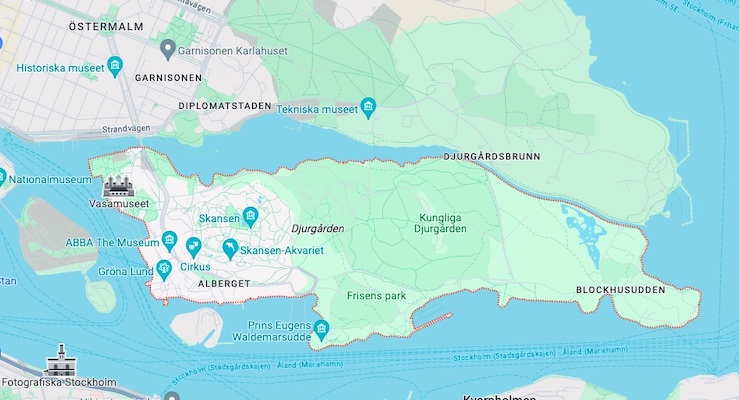
Living history at Skansen
One of the attractions in the Djurgården is Skansen, the world’s oldest open-air museum. We had heard a little about it – that old buildings from different parts of Sweden had been disassembled and moved there. So we expected to see some historic artifacts. But Skansen turned out to be so much more than old buildings.
When you walk into the park, you are immediately immersed in a bygone era. The buildings you see – houses, workshops, barns and sheds – are all from a different time. Many of the buildings are outfitted as they had been in their original setting, and some had reenactors in place who talked about the activities that took place in them.
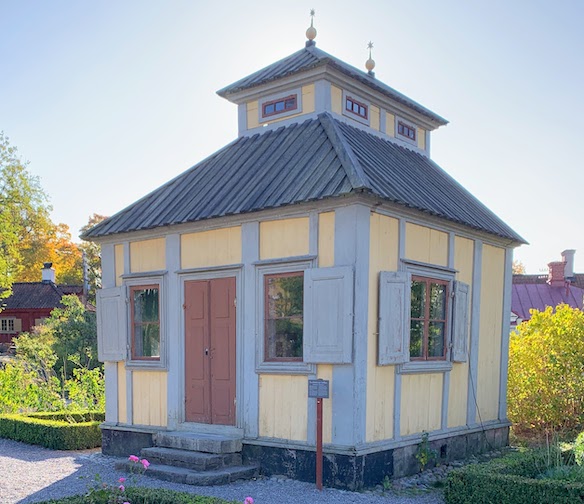
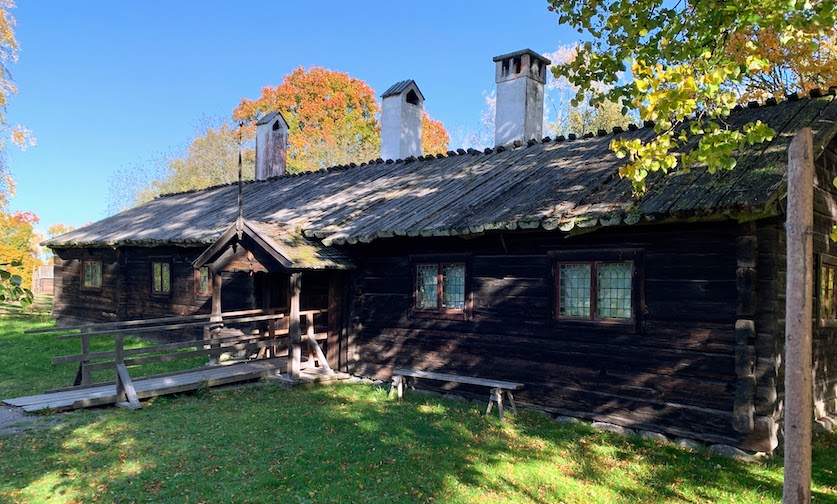
The tools and utensils are old. The furnishings are spartan. Life in Sweden 150 years ago was hard, particularly in winter. But you can also see the ways the Swedes adapted and thrived.
Our first stop was the glass blower’s workshop. There we watched as an artisan heated a blob of glass in a furnace and then started expanding it by blowing through a long metal tube. I’ve always admired glassblowers. Their art is the closest thing to alchemy that I’ve ever seen.
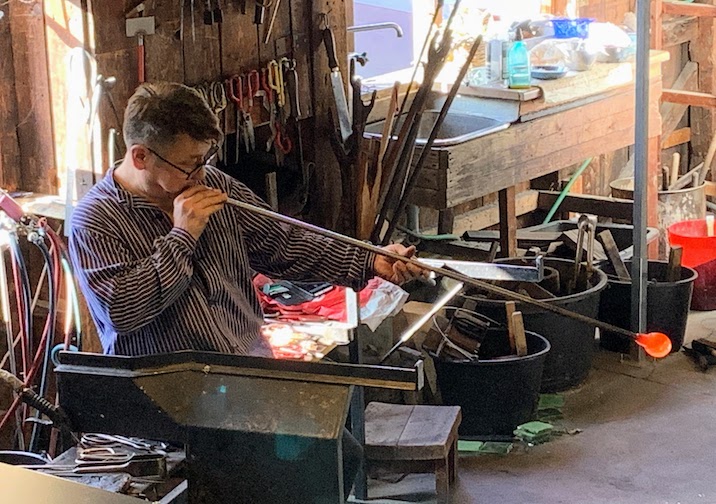
The next stop was the hardware store, where we spent several minutes talking to the man who was acting as the storekeeper. The building dated back to the 1880’s, but the interior was newer – it was outfitted like a hardware store would have been in the 1930’s.
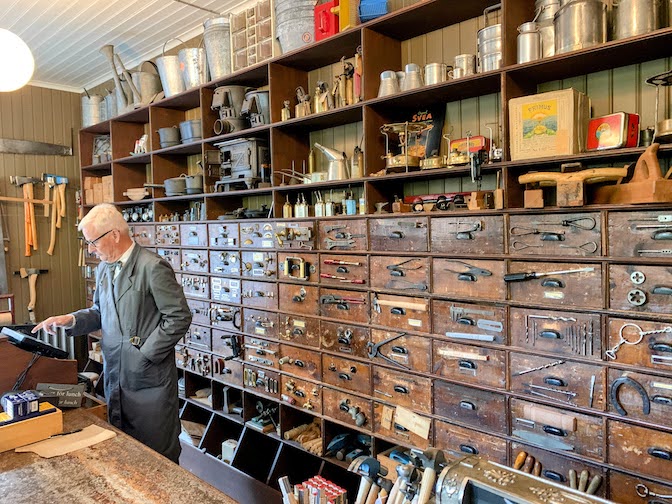
We saw a bakery in the next building where traditional flatbread was being made in a wood-fired oven. The samples we were given were interesting – not a lot of flavor because there had not been many ingredients.
Skansen sits on top of a hill where you can get nice views of other parts of Stockholm. One area was right next to a formal garden.
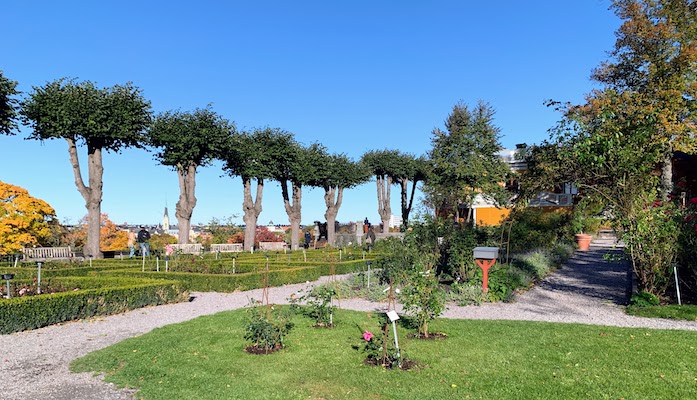
The reindeer was otherwise occupied
We spent a couple hours exploring the park, and also waiting for one exhibition scheduled for just past noon – the “Talk with Reindeer”. (Did we mention that Skansen also has a large open-air zoo?) This was to be a short program where one of the zoo staff members would bring out a reindeer and tell us about it.
Unfortunately, we came during mating season for reindeer, so when the zookeeper came out by herself, she had to explain that the reindeer “had other things to do” that day.
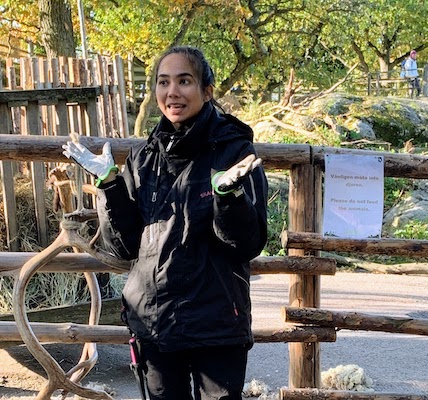
She made a good effort to tell us about reindeer and their habits, but had to keep apologizing because the subjects of her talk were “otherwise engaged elsewhere”. She managed to keep a straight face throughout her talk and we applauded when she was done.
What’s for lunch, Mary?
It was early afternoon and time to get something to eat. We had been directed to one of the restaurants on site and had a delicious lunch from their cafeteria line. Mary was determined to eat meatballs every day in Sweden, and at Skansen she got a good daily dose.
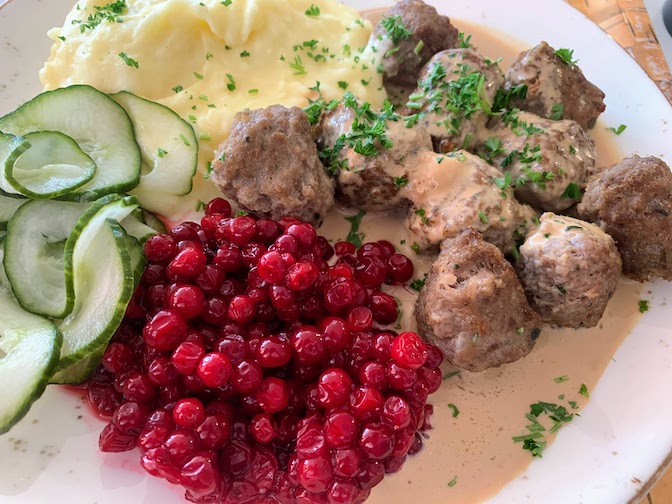
At the end of the day
Rosa took us out to dinner at the Stallmästregården Hotel. This was a place where she remembered dining as a child with her parents. Back then, she said, it was a very formal place. It still looked formal to us, but the atmosphere was relaxed, the service was exceptional, and the food was excellent. It was a lovely way to end a very enjoyable day.
Until next time / Até a próxima vez
Mary and Mike
The Cook and The Writer
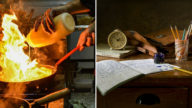
Where have you gone to see history come alive? Tell us about it in the comments below or via the Contact Us form.
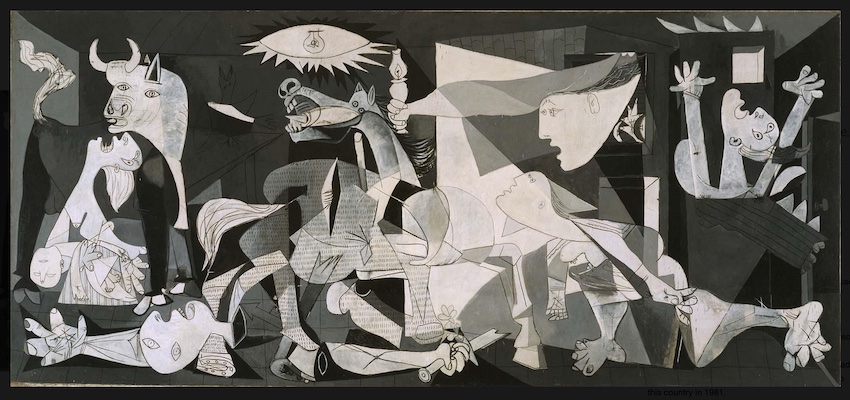
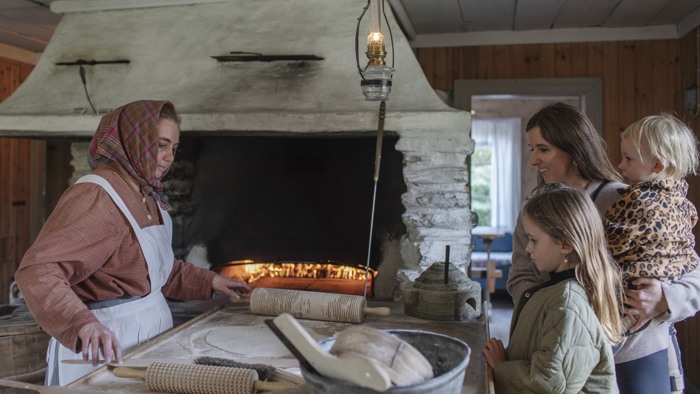
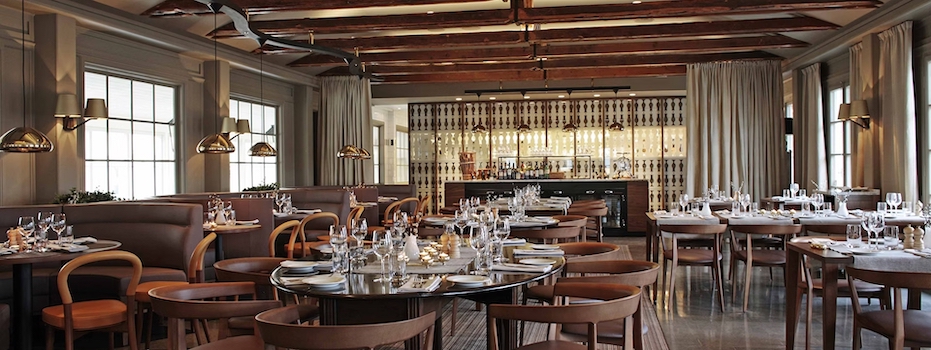

We loved reminiscing alongside you. Sweden holds such a dear place in our hearts. The open air market is one of the best. ❤️
Thanks for including the link to my Coach Museum post. Your Step back in Time post reminded me a of Colonial Williamsburg. I’m putting this Swedish attraction on my “places to visit list” along with a side of Swedish meatballs! -CW
Looks like a wonderful day of exploring . . . And, meatballs, claro!
Thanks for whetting our appetites!
David